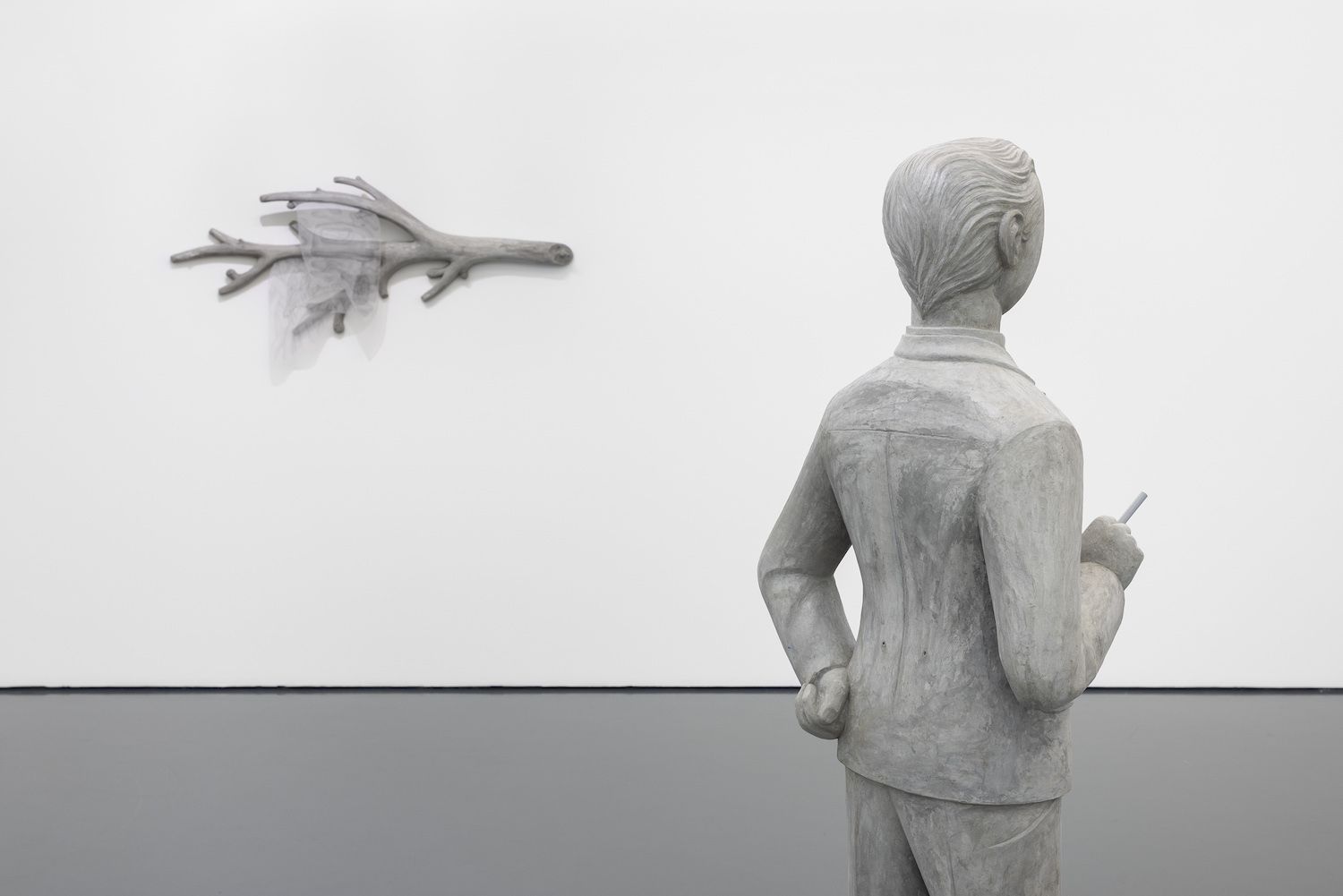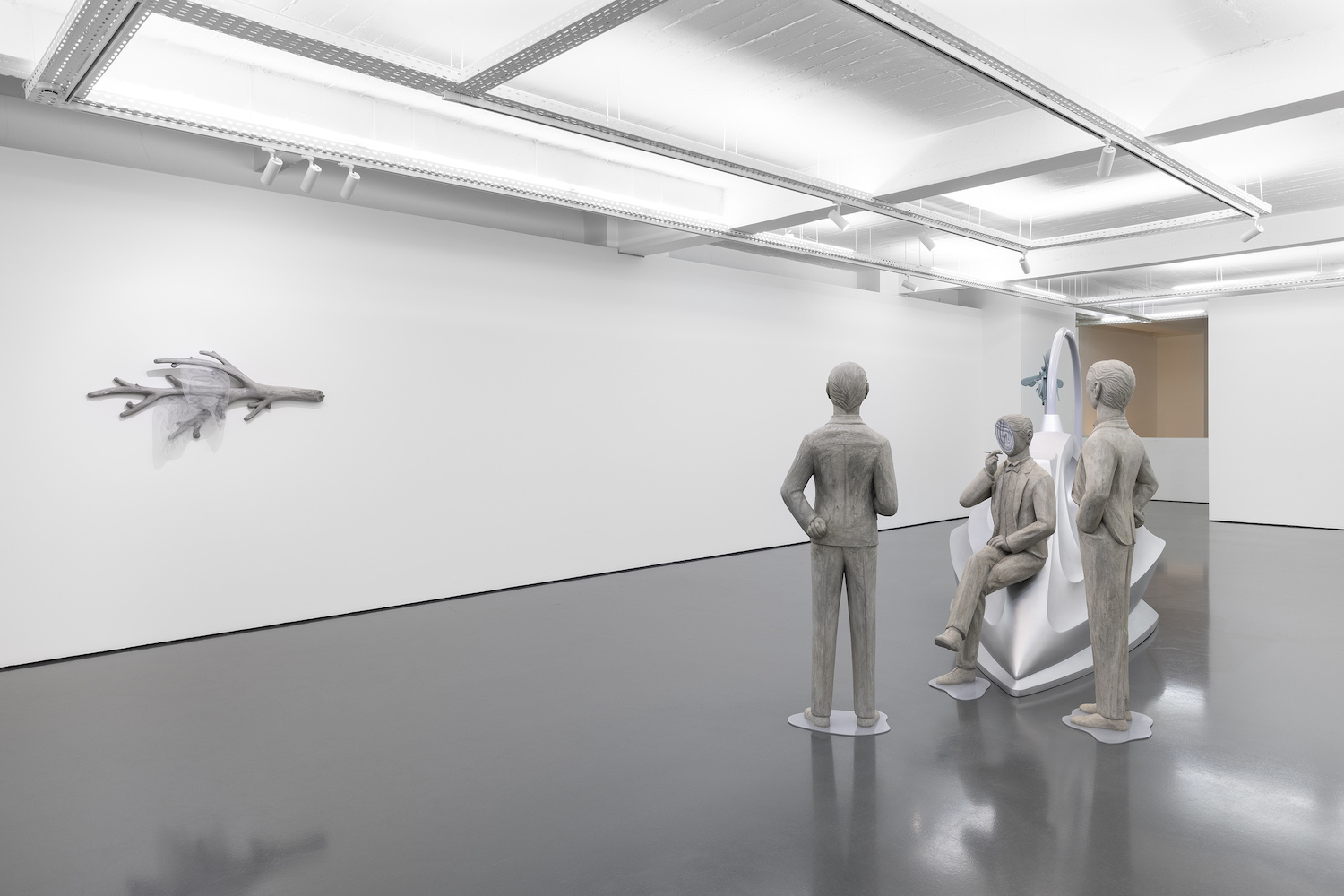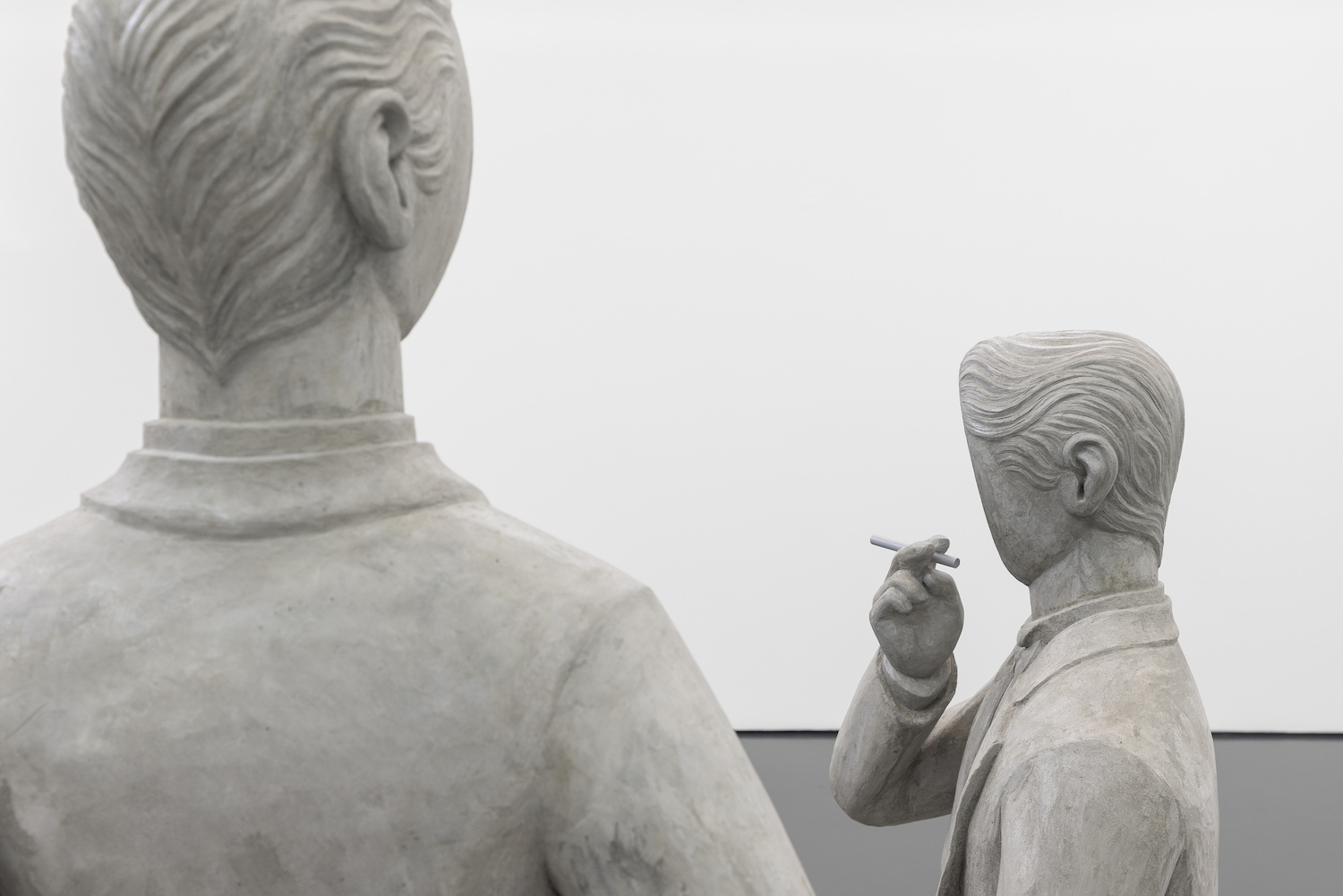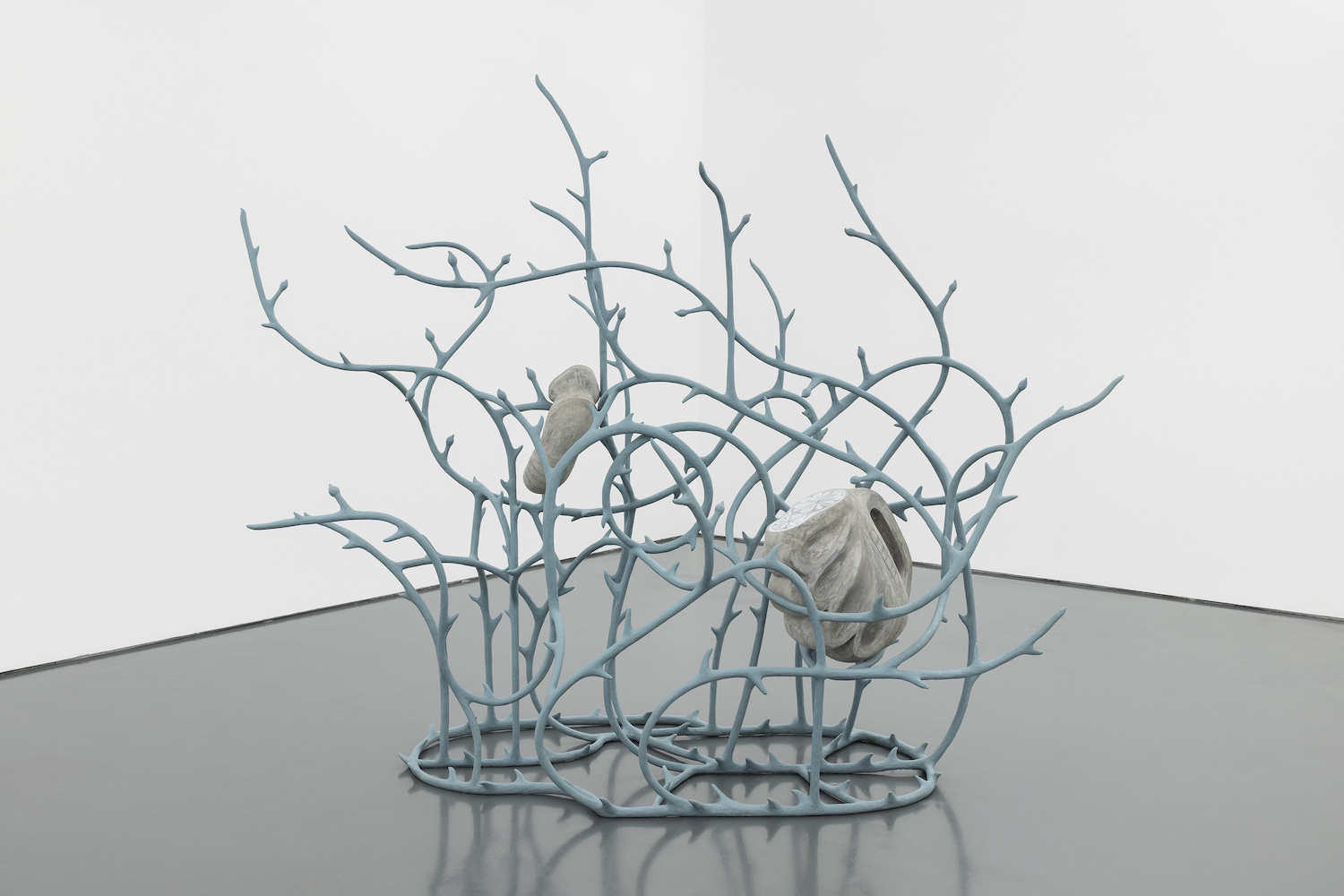Anna Hulačová: Pheromones and Gentlemen

When it comes to sculpture, especially when the sculpture portrays the human being, today more than ever, the discourse inevitably focuses on the function of statuary, on the intrinsic meaning aimed at monumentalising the depicted subject, consigning it to the eternity of history.
Since this process is still under discussion, I think you will forgive me if I don't even hint at a possible answer to this issue. The discussion on this topic seems, somewhat like everything today, to polarise into two diametrically opposite attitudes: on one side, we see those who still consider the preservation of (and perhaps even the creation of new) monuments dedicated to the deeds and heroes of history fundamental; and on the other one, there are those who deem it necessary to dismantle some, if not all, of the monuments that mostly depict white men who, through a strange reinterpretation of the past in a contemporary context, are accused of various timeless and ageless crimes.
Now, Pheromones and Gentlemen is absolutely an exhibition—the second by Anna Hulačová at Galeria Pedro Cera in Lisbon—that at first glance appears to be a "statuary" exhibition, although we quickly realise that there is a small short-circuit between the classic subject-object opposition.
Upon entering the gallery, our attention is immediately drawn to this group of men sculpted in raw concrete. These gentlemen, evoked from a not-so-recent past, seem engaged in ordinary conversation, smoking and paying no attention to their surroundings. (Not even to the fact that one of them is leaning against a giant iron! But we'll come back to this later.) Perhaps the first characteristic that becomes evident is the powerful materiality of the works—all the details sculpted in raw concrete radiate with a blinding anonymous grey. It's impossible not to be struck by how the artist manipulates the material through a skilful play of volumes and textures, giving ordinary concrete a plasticity usually attributed to much nobler materials. Up to this point, everything seems normal, until we realise that the heads end with a flat surface, as if the face had been perfectly sliced. In place of the typical individual features of the face, we find graphite drawings, flows, almost cosmic motions of distant planets. These sculptures, reminiscent of Soviet brutalist buildings, completely subvert the idea of classical statuary; and instead of "celebrating" specificity, they seem to elevate anonymity. Monuments to no one!
This complexity, which we could define as purely technical, however, underlies something hidden within—a set of references and symbols that reveal a new narrative. And it is precisely when I become aware of this that a series of contrasts emerge, both directly and indirectly, from the enormous installation in the first room of the gallery.
A gigantic iron, almost resembling a spacecraft, generates an evident contrast in the eyes of the viewer. Its sparkling, metallic forms speak of a world that is very different from the imperfect and porous one of concrete. This new element seems to be a tribute to technique, to everything that has been born and generated by the hand and ingenuity of human beings. Though a lifeless, decidedly unnatural entity, it presents a new ambiguity. The wire that should connect the appliance to electricity, through voluptuous lines and sudden curves, leads us to a third sculptural level. At the end of the line, a bee, perched in the centre of an orchid, feeds and inadvertently collects pollen to spread to other flowers, thus allowing the plant to continue its existence and reproduce. This new level, which we could call "natural," possesses, like the others, its own specific materiality that differs from the human and technical elements. A synthetic blue, almost plastic, definitely unnatural, contrasts with the reproduced subject.
An initial interpretation from a spiritual and symbolic perspective unmistakably comes to light: the bee, dating back to ancient Greece, has been regarded as a representation of both immortality and fertility, as well as the realm beyond life. Anna Hulačová places us once again in front of contrasting symbols and elements—life and death, artificial and natural, masculine and feminine. After all, regardless of how anachronistic it may be, the idea of conflict has always been paramount to generating political and social balances, or simply new ideas, if we think of it in terms of a discussion between opposing positions. The key to understanding the work of the Czech artist seems to revolve around the possibility of creating new, different narratives by attempting to commission and hybridise positions that are too easily considered polar opposites.
Today, more than ever, we tend to read contemporaneity through dichotomies—distinct entities that live on parallel planes, which sometimes intersect but we think will always remain divided. It is easy for me to think of the most classic division that I seem to hear in everyone's mouth: there is a clear definition of what is natural, radically opposed to the idea of what is artificial. The enormous installation that gives the exhibition its title seems to shout at us when we stubbornly get it wrong. The three elements (natural, human, and technological) merge into a single body, speaking to us of an interconnection that is now inevitable and that perhaps is ferrying us into a future where the boundaries between categories will become increasingly blurred and impossible to define. However, the artist does not limit herself to the classic dystopian ending so dear to contemporary science fiction (mostly cinematic) narrative. Instead, she seems to speak to us of possible futures. Particularly for this utopian and dystopian future, Anna Hulačová goes beyond certain models, as well as certain power relationships, which, like ruins, are destined to be abandoned to the lethal immortality of history.
Embracing these convictions, elements that initially seemed contrasting to me appear much more harmonious; and when looking at the other works in the exhibition, it’s also possible to perceive the narrative and material fluidity that emerges from the sculptures. Under this new light, upon entering the second room of the gallery, the work Stuck in a Bush stands before me, akin to the finest of dramatic conclusions. Using its thorny branches, a thicket of brambles, of a "very natural" synthetic blue, traps some concrete elements, ruins of a past world, including an electric razor with an insect-like body, among others.
Once again, Anna Hulačová presents us with elements and materials that seem to come from different eras, shattering the convention that history is cyclical and progress linear. She offers possible visions of Days of a Future Past!
Enzo di Marino [Vincenzo Di Marino] is an Italian curator based in Naples. In 2018, he co-founded the curatorial project Bite The Saurus. He collaborated with the Prada Foundation, Milan; Madre Museum, Naples, among others. In 2019-2020 he was an assistant curator at MAAT.
Proofreading: Diogo Montenegro.




Anna Hulačová: Pheromones and Gentlemen. Exhibition views at Galeria Pedro Cera, Lisbon, 2023. Photos: Bruno Lopes. Courtesy of the artist and Pedro Cera Gallery.
